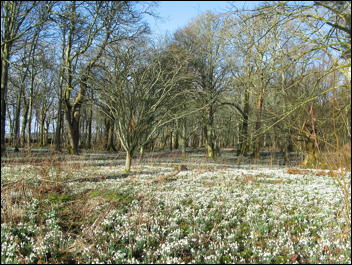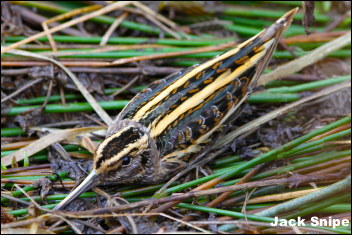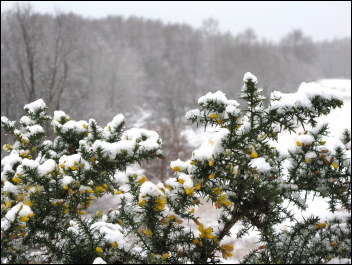February 22, 2015 at 8:01 pm

A week on Islay has coincided with the snowdrops at Bridgend being in perfect condition. As usual amongst them were some fine examples of Scarlet Elf Cup fungi. Three Bullfinches were feeding on the buds of a shrub in an adjacent garden.
The first wildlife photo of the week was of a Mink, on a loch edge and this is bad news for Islay’s wildlife as mink are vicious killers. The local gamekeeper has been suitably informed. A group of Red Deer stags close to the road provided a photographic bonus. Despite some searching only one Otter has been seen and this stayed its distance.
Along the coast both Glaucous and Iceland Gulls have been encountered along with Purple Sandpipers and Dunlin.
Raptors are always an attraction on Islay and Hen Harriers have been seen almost daily. Golden Eagle and Sparrowhawk appeared regularly but the highlights have got to have been the pair of Sea Eagles on a rock as we sailed up the Sound of Islay. The wild weather has produced few sunsets but snow on the ground one day was an unexpected attraction. Click here for some of this week’s photographs
February 15, 2015 at 7:36 pm

During the last five weeks I have spent time in the Ribble valley trying to attract a Great Grey Shrike to food. A friend with a farm near Clitheroe has a cat that regularly catches mice and voles. These I placed on a stump for the Shrike to eat. Unfortunately the Shrike had to find them first and I spent long hours under a camouflage cloth (including a white one in the snow) waiting for it to appear to film it but I had no success. The closest it came was when it flew past thirty yards away and I am still convinced that had it seen the prey it couldn’t have resisted taking it and placing it in its larder. However, you can’t win every time. click here
February 8, 2015 at 8:01 pm

With high pressure all week and a low temperature of -5°C it made perfect conditions to go looking for Jack Snipe. The aim is to locate a Jack Snipe before it flies off and this I achieved early in the week as the Snipe roosted in an iron water ditch. For five consecutive days I was able to return to the ditch, locate the bird, take a few photos and then leave without it flushing. As Jack Snipe feed nocturnally these are roosting diurnal birds and to prove this I returned to one five hours later and it had only moved one inch!
All was going well until day five when a Common Snipe was also in the ditch. This bird exploded out of the ditch upon seeing me and in so doing also flushed the Jack Snipe who has not returned since!
On one occasion the sun was shining on the back of the camera so it was difficult to see through the screen. Whilst I knew the Jack Snipe was in the middle of the picture you can imagine my surprise when I downloaded the photos to the computer and could see part of the head then the tail of a second bird!! I have included these in this weeks gallery but would have preferred a single picture of two birds together.
After last years winter of no snow or frost it has been a revelation to work with this little gem from scandinavia. Click here
February 1, 2015 at 7:11 pm

This week the early flowering snowdrops and gorse have been covered by several inches of snow topped off with frost. These stunning arctic conditions always remind me of the pristine beauty of Spitsbergen with the only missing ingredient being Polar Bears so this weeks gallery is a short selection of photos I took when I was last there in 2009. According to some predictions there will be no Polar Bears left in twenty years time so now is the time to start saving up to go before it is too late- sailing through the Arctic pack-ice at mid night is an experience that is impossible to describe.
The Big garden birdwatch last weekend was a disappointment in respect of the number of birds in the garden. The surprise birds were a Grey Wagtail, feeding on the lawn, and a Nuthatch, neither of which are common birds in our garden. Although numbers were down we did reach 20 species which was respectable on a mild day.
Elsewhere last week two hundred Lapwings were still using the roof of the local industrial estate and in the woods Woodcock are regularly encountered.Click here





